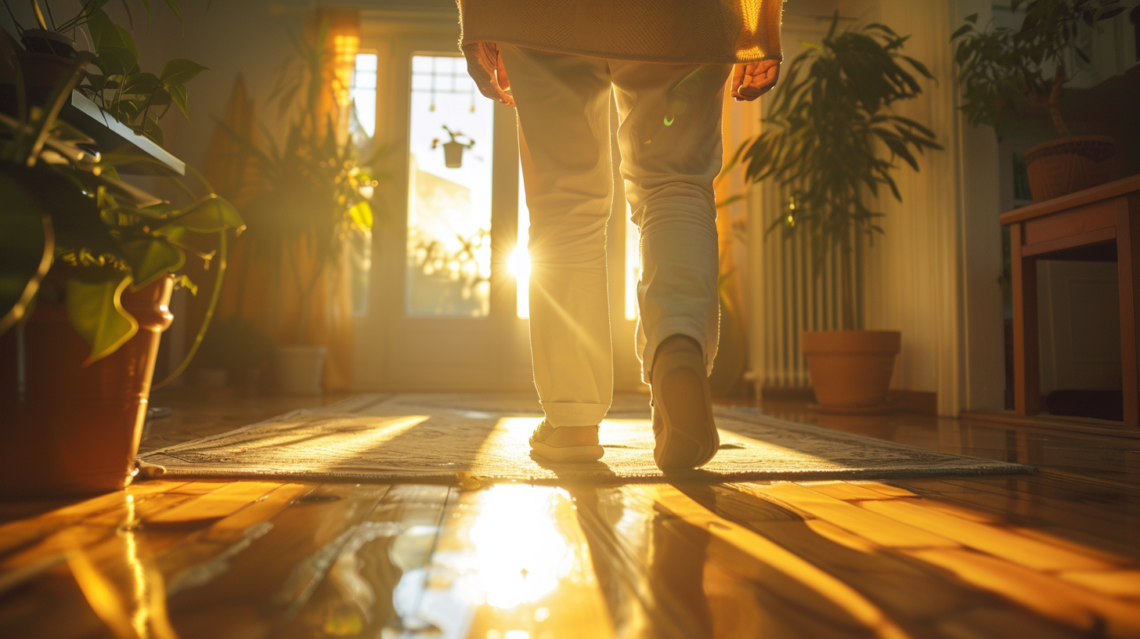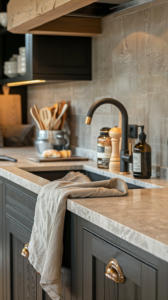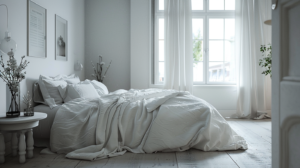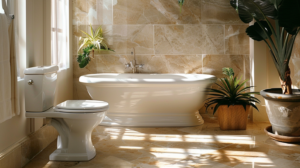
Home Health and Safety
Your home can be a place of comfort, but it can also be a place of things such as stress, indoor air pollution, germs, and other health hazards. In this article, you’ll find information on how to give your house the healthiest makeover possible, and how making just a few simple changes can benefit you and your family’s overall health and wellness in the long-run.
 The Kitchen
The Kitchen
There are many different hazards in the kitchen that we don’t often think about. Everything from how to handle and cook our food, to cleaning the dishes. When it comes to cooking things such as meat and poultry, we need to be extra careful. For example, when you purchase meat or poultry it may contain bacterial such as salmonella. If you develop a salmonella infection, symptoms that you can experience include stomach cramps, diarrhea or bloody stools, nausea, vomiting, chills, fever, and headache. The best way to kill off any potential bacteria on meat and poultry is to make sure you cook it thoroughly. Some individuals like to rinse their meat before cooking it, but the US Department of Agriculture says that’s not necessary as washing it could actually further spread the bacteria around. In addition, you should never place cooked food on the same plate as food that was previously raw – or vice versa. If you don’t plan on cooking all of your poultry, you can freeze it. Things like chicken breast can last as long as nine months in the freezer, while ground chicken lasts up to approximately three months – just make sure to remove it from its original packaging and store it freezer bags, plastic wrap (saran wrap), or aluminum foil (tin foil.) Any cooked food should not be left out in room temperature for longer than 2 hours, as this can cause bacteria to grow and make it unsafe to eat.
Kitchen towels are something you also might not think to be full of bacteria, such as E.coli, but they are, and this can lead to food poisoning. Similarly, sponges can also become a breeding ground for bacteria, even if used just once or twice. Experts recommend swapping your kitchen towel for a fresh one every few days, and making sure you wash the used ones in hot water to make sure you kill off the bacteria. Sponges should also be replaced just as often.
The stove can also be hazardous and lead to fires, particularly if stove burners and oven range hoods are not cleaned regularly. To prevent grease fires, it’s recommended to keep the underside of range hoods as clean as possible; some may also have filters that need to be changed. When it comes to cleaning stove burners, they’re fairly easy to do – just make sure that your stove is off and they’ve cooled before doing so; this way you won’t burn yourself. To remove film from the burners, you can use things like baking soda and water, or lukewarm water and dishwashing detergent.
Because grease fires can occur, it’s also important that your home – particularly the kitchen – be equipped with a fire extinguisher that is easily accessible. Having a multipurpose dry chemical extinguisher is best, as it will work on ordinary combustibles, flammable liquids, as well as be essential in combating electrical fires.
 The Living Room
The Living Room
Out of any room in our home, we probably tend to spend the most time in the living room as this is typically where the television is located and is where families can congregate together. It’s also one of the rooms that has the most air pollution – either from open windows or other pollutants such as mold and furniture polish. People also like to use air fresheners in their living room (as well as in other areas of the home, such as the bathroom), but these can potentially lead to things like a sore throat, sore nose, and sore eyes – especially in individuals who happen to be sensitive to scents. If you’re looking to freshen up the smell of your living room, pick out your favourite essential oil and mix it in a spray bottle consisting of 2 ounces of water, then spray that around the living room.
Flat-screen televisions can also pose a safety hazard, particularly to younger people. However, depending on the size of the TV they can also pose a risk to older individuals as well, especially if a natural disaster like an earthquake were to occur. The same goes for things like bookshelves and glass coffee tables. Always make sure your TV is secured tightly to the wall or to your home entertainment unit by using straps to prevent them from falling.
 The Bedroom
The Bedroom
This is another room that we spend a lot of time in. Similarly, to living rooms, it’s important to have good quality ventilation in the bedroom as well. Good air quality can have a significant effect on your health – even when you’re sleeping. To improve air quality levels in your room, health experts suggest keeping your windows and doors open whenever possible; however, if you find it too noisy or cold, then keeping them open just slightly is also fine.
Bedding, such as comforters, sheets and pillows should also be washed regularly. Bedding can become a breeding ground for things like oil, dirt, and even dust mites – all of which can aggravate allergies as well as cause or aggravate symptoms of asthma. When it comes to comforters and sheets, it’s recommended that you wash them at least every week or every 2 weeks; while it’s recommended that pillows be washed or replaced at least every 3 months.
Your sleep can also be affected depending on the type of lighting your using. While many have made the switch from incandescent lightbulbs to LED lightbulbs for energy efficiency, they also tend to produce more blue light than the incandescent bulbs do, and blue light has been known to have a negative effect on melatonin, which is responsible for making you fall asleep. If you do have trouble sleeping and are using LED bulbs in your room, try making the switch back to an incandescent bulb and see if that helps in any way. Sometimes using things like ear plugs or eye masks can also be enough to help you get a better night’s sleep. If you’re still having a hard time sleeping even after switching types of lightbulbs, you may suffer from a sleep disorder known as insomnia, and this should be addressed with your family physician as you may need to take medication to help you sleep.
 The Bathroom
The Bathroom
This is another room that you might not necessarily think would have any health hazards, but due to moisture it is one of the rooms in your home that is most susceptible to mold growth. In order to keep your bathroom mold-free, make sure that there is proper ventilation (such as opening the window), as well as scrub floors with warm water and detergent, then allow those areas to dry completely to prevent new mold growth. Things like sinks and toilets should also be wiped down with a disinfectant solution. In order to kill bacteria, it’s recommended you let the product sit on surfaces for at least 10 minutes before wiping it off completely. Similar to kitchen towels, bathroom towels can also be breeding grounds for bacteria and can also increase the risk of infection if used by someone who is sick, so make sure you wash towels frequently.
Other Tips
Plugs and electrical sockets can also be a safety hazard. If plugs become loose or your electrical sockets stop working all together, contact an electrician to fix the problem. You also shouldn’t pull plugs out by the cords, as this can weaken them, expose wires, and may become a fire hazard. If you have younger children in the home, make sure all plug outlets are covered with a safety cap.

